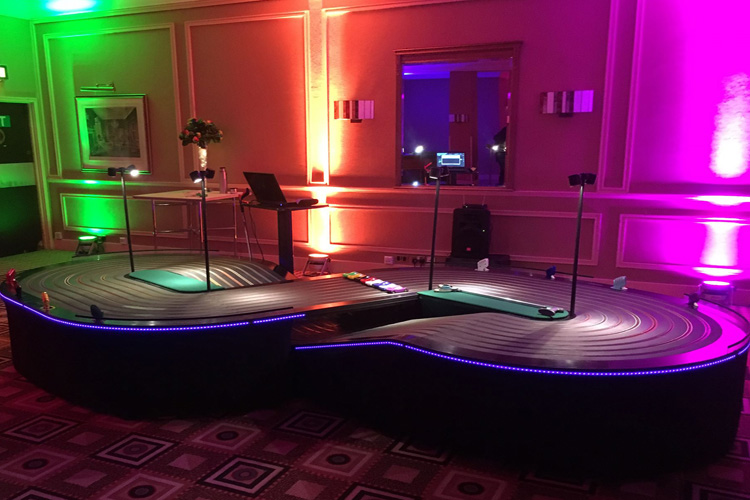You can set up a Scalextric track to replicate a variety of well-known real-world racing circuits or to build the most outrageous slot car track you can imagine. Creating an extension for any track that came with your slot car set is incredibly straightforward. Track Extension Packs from Scalextric include particular track sections and components. Track packs include standard straights and corners, side swipe sections, hairpin turns, and jumps. In this post, we will study a modified slot car competing in a GT heat from the perspective of the driver.
Scalextric has four distinct curve radius options. Certain radiuses provide more than one track element. If you are building a multi-lane track, these are helpful. Different radius curves are required to align with adjacent lanes, even though the straight track components remain the same for all lanes. The tightest corner is radius 1, which extends out through radius 4. To see this idea illustrated, please refer to the page’s featured image. You just have more options for creating different corners as you see fit if you’re not doing multi lanes. A graceful chicane here, or a hairpin curve there. There are plenty of options available to you.
The Need For Speed
Motorsport fans love nothing more than to watch a qualifying lap or race from every angle, so television plays a big role in the sport. Cameras can truly capture the acceleration, cornering speed, and wheel-to-wheel action on the track when positioned correctly, but is it possible to capture these elements in slot car racing? High-definition cameras can now be found in tiny devices like mobile phones thanks to recent advancements in video camera technology. Lightweight and compact cameras also make it possible for other gadgets, like drones, to fly and record the scene below without obstructing control. What are the primary factors to take into account when modifying a 1/32 slot car to capture the action on the track?
Slot Car Limitations
Competitors are aware that a slot car must run at a high level in order to win. After all, we want to capture the action at the front of the race, not the blue flags as the leader passes our car. In essence, adding a camera to a traditional slot car just makes it heavier, which can cause issues if the center of gravity is changed. Cameras also need to be positioned significantly higher than the chassis baseline in order to get the best angle or view from the “driver’s perspective.”
Next, you need to think about the kind and dimensions of the camera. The best video quality is provided by handheld cameras, but they have trouble fitting into the body and chassis’s tight spaces. Even though action cameras like the GoPro have superior video quality and increased durability, they are still too heavy. Which brings us to micro cameras. Though they are small and of good quality, they make an excellent starting point.
Preparing to Race
We have to mount the camera to the slot car of our choice after deciding on a type, disassembling it into its component parts, and charging the battery completely. Now put your Ferrari fandom aside as we take a closer look at a heavily modified Fly Ferrari F40. Upon first glance, you might observe that the roof has received the “convertible treatment” and that the interior is rather simple. With the aid of a 3D printed chassis, the motor has also been set up to a sidewinder position, which maximizes the camera’s angle. To safeguard the lens and improve image stability, foam has been placed in certain places.
Get your Scalextric track from Viva Vegas and see what more you can explore.

